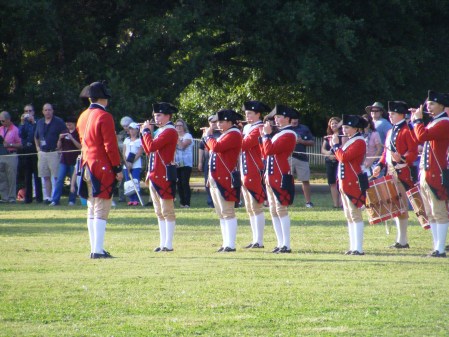Let’s Discuss
Chapter 5
My Popular Music
Each generation, it appears, has its own popular music. For mine, it is what is now called The Great American Songbook, or Standards. I was born in 1930. The number one hit that year was “Happy Days Are Here Again,” which was adopted by the Democratic Party and played at the 1932 Democratic National Convention that nominated Franklin Delano Roosevelt for President. Americans were looking for happy days to return, and FDR promised them “a new deal.”
Some of the other hits of 1930 were “Ten Cents a Dance,” ”On the Sunny Side of the Street,” “Body and Soul,” “St. Louis Blues,” “Georgia on My Mind,” “Puttin’ on the Ritz,” “Embraceable You,” and “Three Little Words.”

Big Bands were still popular when I was the drummer for the Teen Tavern Tooters in the late 1940’s. Teen Tavern was a teen club for Columbus, Jordan, and Baker High Schools that was operated by the Columbus Recreation Department when World War II ended. The above photo was taken in 1947.
By 1930, big bands were beginning their dominance of the popular music scene because dance music was very much in demand. Swing was becoming the thing. The fox trot, jitterbug, and Lindy Hop were gaining popularity in the ballrooms. By 1936, the big bands had become dominant. There were a few vocalists whose names topped their accompanying orchestras on record labels. The number one hit of 1936 was “Pennies from Heaven” sung by Bing Crosby. However, the vast majority of hits featured big bands such as Tommy Dorsey, Shep Fields, Jimmy Dorsey, Jan Garber, Eddy Duchin, Guy Lombardo, Hal Kemp, and Jimmie Lunceford.
Then, in 1938 Glenn Miller started his climb to the top. Wikipedia reports he was the best-selling recording artist from 1939 to 1943. In 1942, he and his orchestra were given the first gold record by RCA Victor for “Chattanooga Choo-Choo.” It was a big hit with 11-year-old me at the time. Another favorite of mine was “Tuxedo Junction,” which was recorded in 1940. It sold 115,000 copies in the first week. When the Bradley Theater opened in downtown Columbus in 1940, it featured an organist from Atlanta whose Hammond organ was hooked up to the theater’s sound system. After the feature film finished, he would play a short concert. He sat on a sofa in the lobby reading a book between concerts. He was a friendly young man and he would take requests. I asked him to play “Tuxedo Junction.” I was thrilled when he played it. Unfortunately, he and his organ were gone in a few weeks. If you wanted to enjoy a live organ performance after that, you had to go to the Fabulous Fox in Atlanta, which was something I wouldn’t experience until six years late, when I was 15 years old.
Since it’s generally accepted that a generation is about 25 years, we can say that my generation began in 1930 and ended 25 years later in 1955. 1955 was the beginning of the ascendance of Rock and Roll music, and the ending of the reign of Swing. Bill Haley and His Comets multi-million selling recording “Rock Around the Clock” was played over the credits of the film “Blackboard Jungle.” Elvis Presley started his career in 1954 at Sun Records in Memphis. Little Richard recorded “Tutti Frutti” in 1955. At the time, I thought Rock and Roll was a fad that would not last. Swing never entirely went away but was rapidly eclipsed by Rock and Roll which is still the dominant form of popular music.





